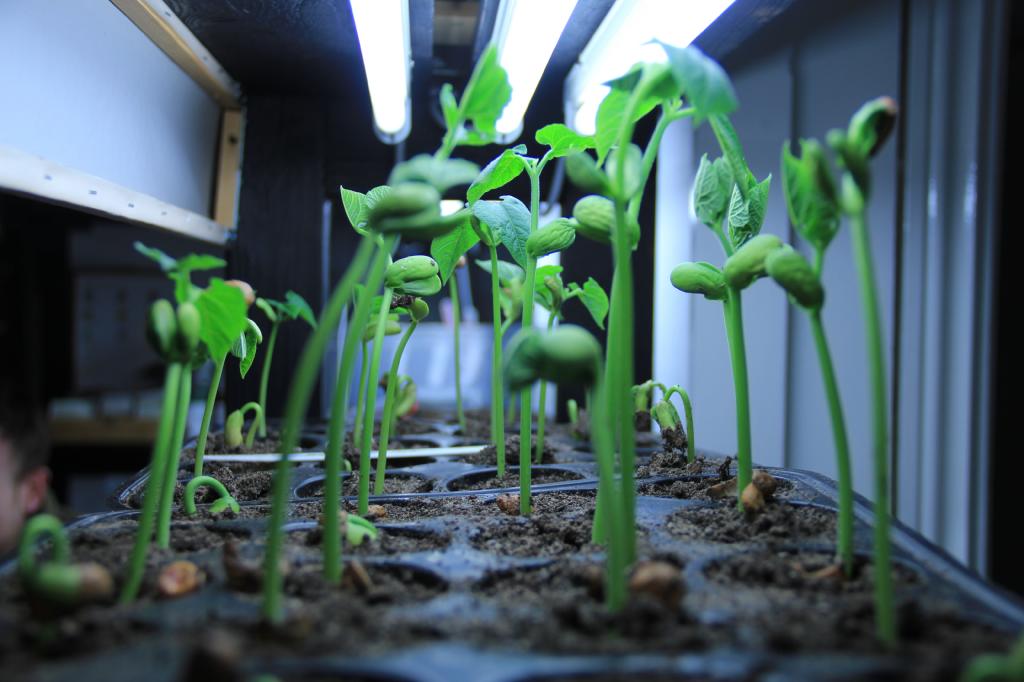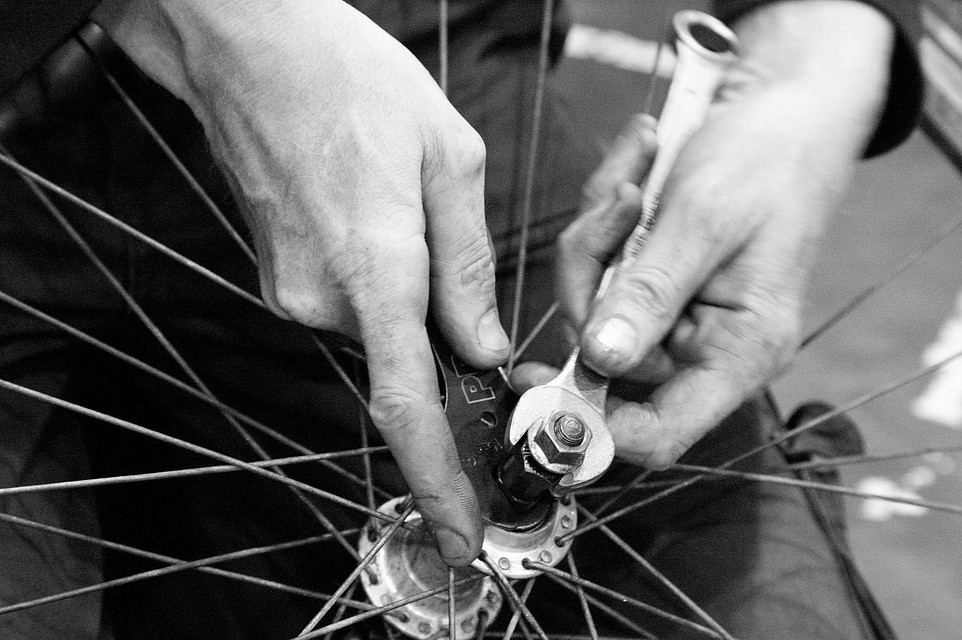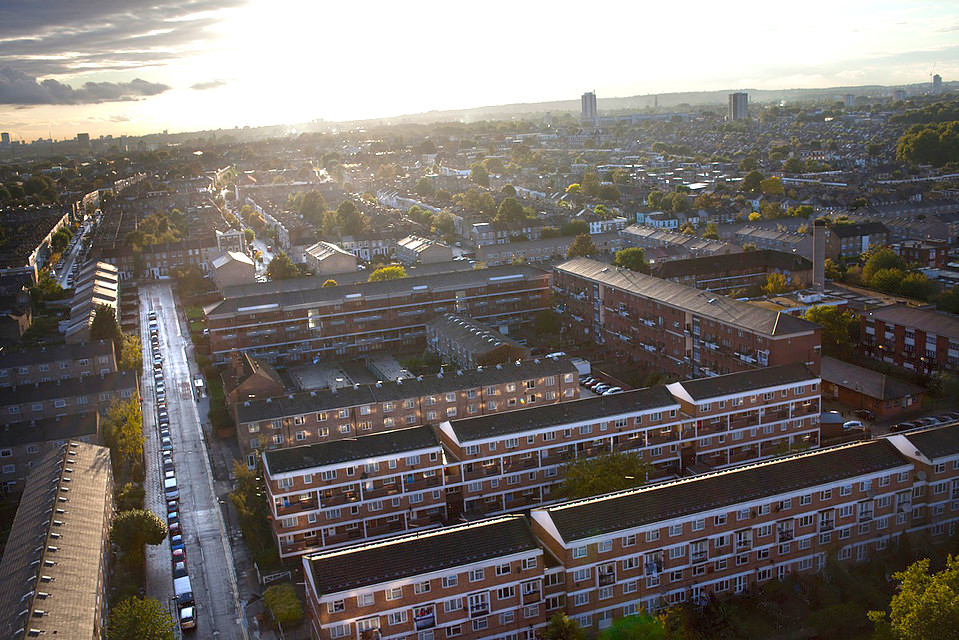
GROWING COMMUNITIES
By Richenda Wilson
It’s a sunny Tuesday morning in Upper Clapton. Tucked away in a walled garden at the top of Springfield Park, grower Paul Bradbury and a team of volunteers are hard at work doing a range of jobs that come together to produce award-winning, city-grown, organic salad: weeding beds, turning compost, patrolling for slugs and harvesting salad leaves for Growing Communities’ popular organic box scheme.
The scene is all very reminiscent of the days almost 20 years ago when we first started visiting a farm near Aylesbury for weekend working trips when we would help with the watercress harvest, plant plum trees and pick caterpillars off Brussels sprouts before settling down to a veg stew around the campfire.
Julie Brown (now Growing Communities’ director) and a group of friends had just set up what was probably London’s first Community Supported Agriculture scheme, agreeing that we would commit to pay the farm a set amount of money each week in return for them supplying us with fresh, organic vegetables.

CRAFTERNOON TEA CLUB
by Beccy McCray and Hannah Elbourne
Crafternoon Tea Club began its life in Hackney in 2007 as a kind of art therapy session between two best friends, Beccy McCray and Hannah Elbourne. Hannah had just split up with some guy and we decided that the best way to get over this was to cut lots of old magazines up into tiny pieces – and get creative.
Although both our day jobs are in the creative industries, we were feeling that we never got ‘hands on’ anymore. The session was a success so we decided to make this freestyle creativity a regular occurrence.
The next month we were joined by a couple of other friends. In this session we jointly created a human collage, which we proceeded to dismantle and cut up again so we could each take a piece home. It became something of a pattern for Crafternoon; usually starting as a tea party, but ending as a noisy creative mash up with a traditional village fete meets festival kinda feel!
... read more in

FARM:SHOP
by Kristen Cheng
FARM:shop is tucked neatly within a series of shops along the ever changing Dalston Lane. This is a shop front with a difference. Just over a year ago when looking through the big barred glass windows of 20 Dalston Lane you’d find yourself looking into an empty space with peeling walls and a rather bleak appearance. A year and a half on you’ll now see a space that’s equipped to grow hundreds of plants and house a growing group of people too.
Initially Paul, Sam, and Andy of Something & Son pitched an idea to transform this space through Hackney Council’s Art in Empty Spaces Scheme into the world’s first FARM in a shop. The council’s initiative was designed to transform a neglected space into something useful and meaningful for residents and visitors, and what better than a public space that combined practical learning and research with the usually daily activities. A big idea was to see how much could be grown in this 4 storey building in Dalston using many different methods of growing new and old.
... read more

RIDLEY'S
by Suzanne O'Connell
Ridley’s was a community-led, public realm intervention that combined food and architecture and featured a food-for-food exchange system. A two-storey structure rose above market stalls, to house a new market food initiative.
Last February we were invited by Zoe from Atelier Chan Chan (an architecture practice) to come up with a temporary intervention for her site on Ridley Road market. We were really excited about the exposed nature of the site, a rich context that meant we were obliged to create a public project. Over a three month period, we spent a lot of time on the market to get an understanding of its routines and people. We tested how our neighbours felt about us cooking there and what the market traders thought of us using their food to make meals. Our neighbours thought strangely of us at first but slowly we gained their confidence.
In response to this research we designed a structure and system that fitted within the rules and rituals of the market. We found inspiration in the market stalls, made with metal frames and wood. The kitchen opened out onto the market with the food storage visible to the street.
... read more

HACKNEY BIKE WORKSHOP
by Adam Thompson
The Hackney Bikeworkshop run classes in how to repair your bike. We are a resource for specialist tools and provide advice on all aspects of bicycles. Workshops occur in the evening from 7 till 9pm three nights a month and are located off Mare Street and in Stoke Newington.
The origins of the Hackney Bikeworkshop are lost in the mists of time, but sometime around 1992 a group of people connected to the Hackney Cycling Campaign started running weekly drop-in sessions at the Hackney City Farm. At that time they were providing a free maintenance service for people’s bikes to enable them to stay on the road. There were far fewer cyclists in London then and it was recognised that people often stopped cycling because of relatively minor repairs which could be fixed easily, and if we did these repairs this would increase the numbers cycling.
... read more

THE PEOPLE"S KITCHEN
by Stephen Wilson
The People’s Kitchen aims to creatively combat food waste and to bring people together around food. Back in late 2010, we were looking for something that blended community and food to add to the Sunday sessions at Passing Clouds, an arts centre in East London that focuses on the communal, the progressive, and the alternatives; rather than the commercial.
It had been a busy summer, I was running a food stall at a festival and met some inspiring people on the adjacent stand that were working with waste food, getting hold of surplus fruit and turning it into delicious smoothies and ice creams. It just made so much sense, as wasted food has always been something that upsets me, mainly because I really love food. It was great to see it being used so constructively, to be seeing waste as a resource. When you dig deeper, the size of this pile of waste food is staggering, and the environmental impact quite profound. We throw away tonnes of food every year.
Estimates put the level of food waste in the UK at 20 million tonnes from plough to plate. It is also essentially a free resource.
... read more

YEAH! HACKNEY
by Emily Webber
Yeah! Hackney is an independent social network for people in Hackney. It's an online hub that facilitates people connecting online around local happenings and issues. The underlying theme of the site is positive action and it tries to encourage real connections through talking about and sharing interesting things that are happening in the borough.
I have lived in Hackney for roughly ten years and think it’s a pretty special place and somewhere worth celebrating. Since moving into the area I have felt the need to get involved with the local goings on. When you live somewhere it seems natural to me that you would want to contribute in some way to it. I spent some time setting up and chairing the residents association for my estate to help improve condition, such as installing a bike shed and improving security; campaigning for improvements to the local area, like getting rid of a disused phone mast or objecting the need for another betting shop. I am also being part of a group that run the local social meetup ‘twee8’ which started as a tweet-up in 2009 (offline meetings organised via online social media website Twitter) and has now spread to a wider Hackney group of anyone that is interested in meeting local people in a local pub.

44 MARLBOROUGH AVENUE
By Eva Baker
The first time I walked through the doors of 44 Marlborough Avenue, I knew that this would be a project with a difference.
The venue, which we’d obtained through Hackney Council’s Art in Empty Spaces Scheme (designed to provide temporary activities in vacant properties that will be useful and meaningful to Hackney’s residents and visitors), was smack-bang in the middle of the Regents Estate; an abandoned and dusty corner shop that had been empty for as long as most of the locals could remember.
The location of the shop is unique in that it is entirely residential. Though it’s only a five minute walk from trendy and buzzing Broadway Market, the shop sits in the middle of what I would learn is a very close knit community through which outsiders rarely passed.

THE STRIVE FOR HAPPINESS
by Alice Osbourne and Ella Britton
The Strive For Happiness started with two friends, Alice and Ella, coming together to create a venture that explored people's relationship to happiness. It started with just the two of us, but now the movement continues to grow.
The Strive for Happiness is a series of initiatives and events which use simple acts of creativity and kindness to encourage dialogue about happiness. We have collaborated with The Royal Mail, Happy Cities, Spots of Time, Hackney City Farm, The Peoples Kitchen and Action For Happiness.
Our events provide people with the space to make, play, reflect, learn, and have fun. We want to enable people to identify what is it important to them and what they really love, then explore what happiness actually means.
An example of a regular event is our weekly 'Correspondence Monday' meet-ups on Monday mornings. This involves groups of people writing and sending letters. The forum helps people write the letter they have been meaning to write for ages. We like to encourage thank you letter writing too, and we have created a special postbox to accommodate letters of gratitude. We believe everyone has a letter to write.

HACKNEY WICK
by Francesca Weber-Newth
‘Community’ is a word that always seems to crop up in conversations about Hackney Wick. It’s not hard to see why – the area is a kind of bowl, set between the Lea navigation canal and the busy A12. Because it is relatively cut off from the surrounding area, it is often referred to as a village with local residents and workers sharing the same few cafes and shops. As the manager of a local café told me: “I know everybody here. It’s like a family.”
With the London 2012 Olympics set to make an impact on East London, the term ‘community’ has gained even more relevance, as well as political verve. People are concerned that the ‘local’ will disappear under a tide of global investment and development. What is expected are shiny new luxury apartment and office blocks, beautification of public spaces and with it, the symbols of gentrification - rising rents and ‘new’ residents.
Although the story is not always so black and white, it is the image of a shark bearing its teeth at a minnow..
... read more

CHATSWORTH ROAD E5
By Euan Mills
Chatsworth Road was laid out in 1867, designed to provide shops, a street market, a cinema and a Carnegie library to what was meant to be a bustling London suburb. By the mid 2000s things were looking very different from how the Victorians had envisaged.
After nearly a whole century, the market had gone, the cinema closed down, the post office moved away and a large number of shops had become either vacant or had been converted. The remaining shops were struggling, suffering from low footfalls and a lack of critical mass to attract customers.
In 2007 the Chatsworth Road Traders and Residents Association (CRTRA) was set up to try and stop the closure of the post office. Although the campaign was unsuccessful, it triggered the start of a conversation about how to reverse the downward spiral the street was going through, and the idea of re-introducing the street market surfaced. From 2008 the CRTRA started negotiating and campaigning to get the street market up and running.

TRADE SCHOOL LONDON
by Olivia Rainford
In April 2012 Trade School London launched in Dalston, Hackney. Over four weeks, on Thursday evenings and Sunday afternoons, over 100 people came together to share and exchange knowledge. In partnership with the original Trade School New York, and hosted by food hub and arts venue FARM:shop, four volunteers worked together to explore just what skills Londoners had to offer and what people would trade in exchange.
Trade School brings people together through mutual exchange - it is a non-traditional learning space where students barter with teachers to attend class and learn something new. It’s pretty much as simple as that, except instead of bartering with money, the rule is (and it’s pretty much the only rule) that no money changes hands.
... read more

HACKNEY PIRATES
by Catriona Maclay
The Hackney Pirates: Creating an unconventional learning environment where young people get one-to-one attention with volunteers from the local community.
Before I start telling you about The Hackney Pirates, have a think back to the most powerful learning experiences that you have had ... Got a couple in mind?
This is how we start the training session that we hold every week with about ten new volunteers who want to support the learning of young people in Hackney. The answers we get are eternally diverse and fascinating, but there are a few things that come up every time. One of the most common is people who recall the experience of having an adult, not necessarily a teacher, notice something good about them, or spend time with them bringing out their potential. Both children and adults describe one-to-one attention as one of the most powerful educational experiences in the world.
... read more

I AM HERE
by Andrea Luka Zimmerman and Lasse Johansson
I was given my flat on the Haggerston estate as part of the ‘hard-to-let’ scheme, later renamed ‘easy access’, aimed at filling the increasing voids on Hackney’s estates that were deemed unfit for families, or where people simply did not want to live. As soon as I moved to the estate in the mid 1990’s, I was told it would be torn down in the future. Once I joined the residents association, I found out that this period of suspension had been in the air since the early 1980s.
The buildings themselves are beautiful, and fall somewhere between the pre-and post WW2 architecture that was used first for slum clearance, then to house the ‘deserving poor’. During its lifetime the Haggerston estate has undergone a remarkable journey from being locally known as the ‘prestige blocks’ to becoming a so-called ‘sink estate’ and named the ‘heroin capital’ of Europe (in 1994 a community film was made in response called ‘Haggerston Is Not Just Heroin’).
Attempts at getting the estate refurbished eventually dwindled, and to further underline the already visible dilapidation, in April 2007, Hackney Homes installed bright orange boards over void units on the estate, to prevent illegal occupation. Being located along the picturesque Regents canal the estate, now dotted with orange boards, rapidly turned into an object of curiosity. Through our open windows, facing on to the canal, we often overheard passers-by speculating on reasons for the buildings demise.
... read more













